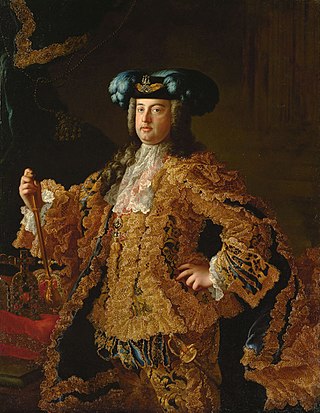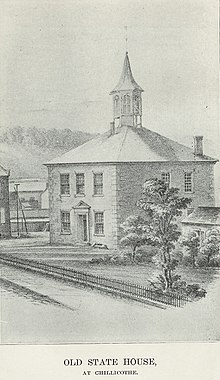Prince Hall Freemasonry is a branch of North American Freemasonry for African Americans founded by Prince Hall on September 29, 1784. There are two main branches of Prince Hall Freemasonry: the independent State Prince Hall Grand Lodges, most of which are recognized by State grand lodges, and those under the jurisdiction of the National Grand Lodge. Prince Hall Freemasonry is the oldest and largest predominantly African-American fraternity in the United States.
A Grand Lodge is the overarching governing body of a fraternal or other similarly organized group in a given area, usually a city, state, or country.

The Most Worshipful Grand Lodge of Ancient Free and Accepted Masons of the Commonwealth of Massachusetts, commonly referred to as the Grand Lodge of Massachusetts and abbreviated GLMA, is the main governing body of Freemasonry within Massachusetts, and maintains Lodges in other jurisdictions overseas, namely Panama, Chile, the People's Republic of China, and Guantanamo Bay Naval Base, Cuba.

The Royal Order of Scotland is an appendant order within the structures of Freemasonry. Membership is an honour extended to Freemasons by invitation. The Grand Lodge of the Royal Order of Scotland is headquartered in Edinburgh, with a total of 88 subordinate Provincial Grand Lodges; of these, the greatest concentration is in the British Isles, with the rest located in countries around the world.
This is a general survey on the historical and modern presence of Freemasonry in countries located in Asia.
In Craft Freemasonry, sometimes known as Blue Lodge Freemasonry, every Masonic lodge elects or appoints Masonic lodge officers to execute the necessary functions of the lodge's life and work. The precise list of such offices may vary between the jurisdictions of different Grand Lodges, although certain factors are common to all, and others are usual in most.

This is a chronology of the formation of "regular" or "mainstream" Masonic Grand Lodges in North America, descending from the Premier Grand Lodge of England or its rival, the Antient Grand Lodge of England. A Grand Lodge is the governing body that supervises "Craft" Freemasonry in a particular jurisdiction or geographical area.
The Grand Lodge of Ancient, Free and Accepted Masons of Nebraska is one of two governing bodies of Freemasonry in the U.S. state of Nebraska. It was established on September 23, 1857. The Grand Lodge of Nebraska is headquartered at Lincoln, Nebraska.
A Research lodge is a particular type of Masonic lodge which is devoted to Masonic research. It is a lodge, and as such has a charter from some Grand Lodge. However, it does not confer degrees, and restricts membership to Master Masons of some jurisdiction in amity with the jurisdiction that the research lodge is in. Related to research lodges are Masonic research societies, which serve the same purpose but function fundamentally differently. There are research lodges in most countries where Freemasonry exists.

The Grand Lodge of Free & Accepted Masons of Indiana is one of two statewide organizations that oversee Masonic lodges in the state of Indiana. It was established on January 13, 1818. The Grand Lodge of Indiana's offices and archives are located in the Indianapolis Masonic Temple. The historically black Most Worshipful Prince Hall Grand Lodge of Indiana F&AM is the second regular Masonic grand lodge in the state, and it was originally established in 1856 as the Independent Union Grand Lodge of Free and Accepted Masons of the State of Indiana. The two grand lodges agreed to mutual recognition in May 1998, and they jointly share sovereignty over the Masonic fraternity in Indiana.

The Grand Lodge of North Dakota, formally known as the Grand Lodge of Ancient, Free & Accepted Masons of North Dakota, is the governing body of the largest group of masonic lodges in North Dakota. It follows the Anglo-American tradition of Freemasonry common in the United States.
The Most Worshipful National Grand Lodge Free & Accepted Ancient York Masons Prince Hall Origin National Compact USA is a body of Masonry in the United States of America composed predominantly of African American Freemasons. It governs Grand Lodges within the United States.

The Grand Lodge of Missouri is one of two statewide organizations, along with a Prince Hall Affiliated grand lodge, that oversee Masonic lodges in the state of Missouri. It was established on April 21, 1821. It is located in Columbia, Missouri.
The Grand Lodge of New Jersey Free & Accepted Masons is the official governing body of New Jersey Masonic Lodges as recognized by other Grand Jurisdictions throughout the world. As early as 1730, New Jersey was one of the first states with active Freemasonry. The Grand Lodge of NJ was formally established in 1787. The Most Worshipful Prince Hall Grand Lodge of State of New Jersey and The Most Worshipful Grand Lodge of New Jersey recognize each other as Masonic Grand Lodges.

The Grand Lodge of Free & Accepted Masons of California, commonly called the Grand Lodge of California, is one of the two Masonic Grand Lodges in the state recognized by the United Grand Lodge of England, the other being the Most Worshipful Prince Hall Grand Lodge of California Free & Accepted Masons. The Grand Lodge of California is headquartered in San Francisco, California.

In Freemasonry, a Mason at sight, or Mason on sight, is a non-Mason who has been initiated into Freemasonry and raised to the degree of Master Mason through a special application of the power of a Grand Master.
African Lodge, No. 459 was the founding lodge of Prince Hall Freemasonry. It is the lodge from which all modern Prince Hall Lodges trace their descent.
Operative Masonry or The Worshipful Society of Free Masons, Rough Masons, Wallers, Slaters, Paviors, Plaisterers and Bricklayers or simply The Operatives is a fraternal guild claiming a history of hundreds of years over which customs, traditions, knowledge and practices were developed and handed down. It is an invitation only, Masonic society dedicated to preserving the history, rituals, and traditions of medieval operative stonemasons guilds in England and Europe that were the precursors to modern speculative Freemasonry.
Freemasonry in the United States is the history of Freemasonry as it was introduced from Britain and continues as a major secret society to the present day. It is a fraternal order that brings men together to gain friendship and opportunity for advancement and community progress. It has been nonpolitical except for a period around 1820 when it came under heavy attack in the Northeast. That attack reduced membership, but it recovered and grew after 1850. Growth ended in the late 20th century and membership has declined.













